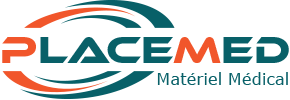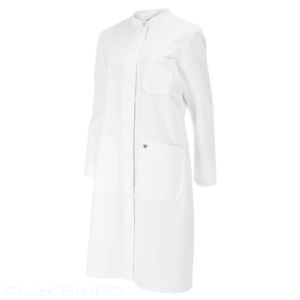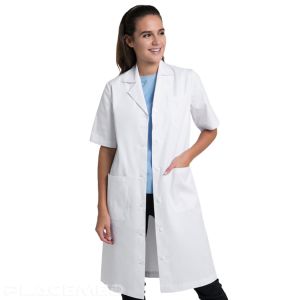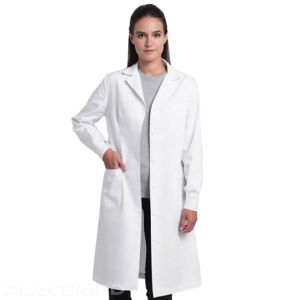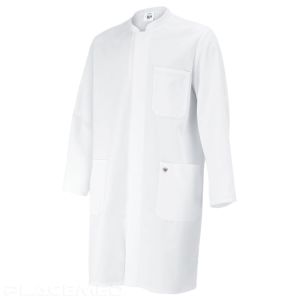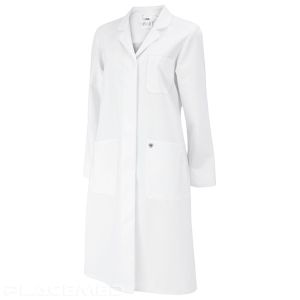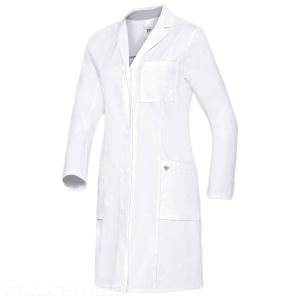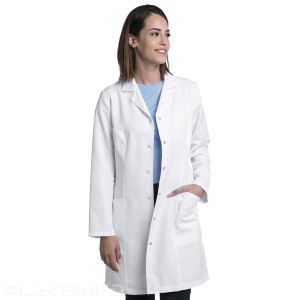How to Choose the Ideal Medical Coat for Your Specialty
In the medical field, a coat is not just a uniform; it's an extension of your professionalism and daily comfort. Whether you're a surgeon, pediatrician, or general practitioner, selecting the right coat tailored to your specialty is crucial. Discover our tips to choose the ideal medical coat that meets your specific needs.

1. Understanding the Specific Needs of Your Specialty
Each medical specialty has unique requirements for attire. It is essential to understand these needs to choose a coat that not only provides the necessary comfort but also the appropriate protection.
1.1 Surgery
Surgeons require coats that offer maximum protection against bodily fluids and contaminants. The materials should be durable and easy to disinfect, ensuring a sterile environment. Blended cotton or technical fabrics are ideal for their durability and ease of maintenance.
1.2 General Medicine
General practitioners spend long hours in consultations and need comfortable and aesthetically pleasing coats. A well-fitted coat made from breathable fabrics like cotton allows freedom of movement while maintaining a professional appearance.
1.3 Pediatrics
Working with children requires a soft, non-irritating coat to create a reassuring atmosphere. Colorful designs and hypoallergenic materials are preferable to ensure comfort for young patients and professionals alike.
1.4 Intensive Care
In intensive care units, durability and functionality are paramount. Coats should provide enhanced protection and be equipped with multiple pockets to facilitate carrying essential medical instruments.
1.5 Other Specialties (Radiology, Anesthesia, etc.)
Each specialty, whether radiology, anesthesia, or others, has its own requirements for medical attire. It is important to choose a coat suited to the specifics of your field to optimize your efficiency and comfort.
2. Tips for Selecting a Coat Suitable for Different Medical Fields
Several criteria should be considered to choose your medical coat properly. Here are some tips to guide you in selecting the right medical coat.
2.1 Materials and Comfort
Material choice is crucial for ensuring all-day comfort. Fabrics like cotton, polyester, or blends offer good breathability and freedom of movement. Make sure the coat is soft to the touch and does not restrict your movements.
2.2 Protection and Functionality
Depending on your specialty, you will need different levels of protection. Choose coats resistant to fluids and germs if you work in a high-risk environment. Practical features like multiple pockets, sturdy zippers, and adjustments make daily tasks easier for healthcare professionals.
2.3 Standards and Regulations
It is essential to verify that the medical coat complies with the standards and regulations in your country or region. Look for certifications and ensure that the product meets safety and quality standards.
2.4 Style and Professional Appearance
Your coat should reflect your professional image. Choose colors and cuts that match your work environment. The option to personalize the coat with a logo or name can also enhance your professional identity.
2.5 Maintenance and Durability
An easy-to-maintain and durable coat is essential for daily use. Check the washing instructions and ensure the material withstands multiple washes without losing its qualities. A durable coat will save you money in the long run.
3. Factors to Consider When Purchasing
To choose your medical coat wisely, it is important to evaluate various aspects that will facilitate an informed decision.
3.1 Size and Fit
The right size is essential to avoid discomfort and allow optimal freedom of movement. Refer to the manufacturer's sizing guide and, if possible, try the coat on before purchasing to ensure a perfect fit.
3.2 Budget
It is important to find a balance between quality and cost. Investing in a quality coat may represent a higher initial cost, but it ensures better durability and increased comfort. Also, consider laundry options or bulk purchases for savings.
3.3 Brand and Quality
Favor brands known for their quality and reliability. Look for reviews and recommendations from other healthcare professionals to guide your choice.
3.4 Availability and Delivery Time
Ensure that the chosen coat is available in stock and that delivery times meet your needs. Good planning will prevent stockouts and guarantee that you always have the necessary attire.
4. Current Trends in Medical Coats
Medical clothing is constantly evolving, driven by technological advancements and the increasing demands of healthcare professionals. This dynamism aims to offer more comfort, safety, and functionality to users.
4.1 Innovations in Fabrics
Antibacterial and odor-resistant fabrics are gaining popularity, offering better hygiene and prolonged wear. Additionally, eco-friendly and durable materials are increasingly sought to reduce the ecological footprint of healthcare facilities.
4.2 Ergonomic Design
Ergonomic coats are designed to offer better mobility and a personalized fit. Adjustable features, like cuffs and waistbands, allow for optimal adaptation to each professional.
4.3 Integrated Technologies
Modern coats integrate practical technologies, such as special pockets for electronic devices or added protection like elbow and knee pads. These innovations facilitate daily tasks and improve the functionality of medical attire.
5. Where to Buy Quality Medical Coats
To buy comfortable and quality coats, it is important to have a reliable professional clothing supplier.
5.1 Specialized Suppliers
Suppliers specialized in medical attire offer a wide range of products tailored to each specialty. They often provide personalized advice and customization options to meet the specific needs of healthcare professionals.
5.2 Online Stores
Online stores offer a wide variety of medical coats with the convenience of home delivery. Be sure to choose reliable platforms with good return policies and positive customer reviews.
5.3 Colleague Recommendations and Professional Networks
Shared experiences from colleagues can greatly assist in choosing the perfect medical coat. Join specialized forums and groups to discuss available options and get reliable recommendations.
Conclusion
Choosing the ideal medical coat is an important decision that impacts your comfort, performance, and professional image. By understanding the specific needs of your specialty and considering essential criteria such as materials, protection, style, and budget, you can make an informed choice. Investing in a quality coat with Placemed ensures a suitable and durable outfit, meeting the demands of your professional daily life.
Bonus: FAQ on Medical Coats
Q1: What is the best material for a medical coat?
A1: Cotton and its blends are very popular for their comfort and breathability, but technical fabrics resistant to fluids are also essential for certain specialties.
Q2: How do I maintain a medical coat?
A2: Always follow the manufacturer's care instructions. Most coats can withstand machine washing at high temperatures, ensuring maximum hygiene.
Q3: Is it possible to personalize my medical coat?
A3: Yes, many suppliers offer customization options such as adding logos, names, or other details to reinforce your professional identity.
Additional Resources
- You can check our White Coats category
- Visit the website of our medical coat supplier BP
 Francais
Francais 